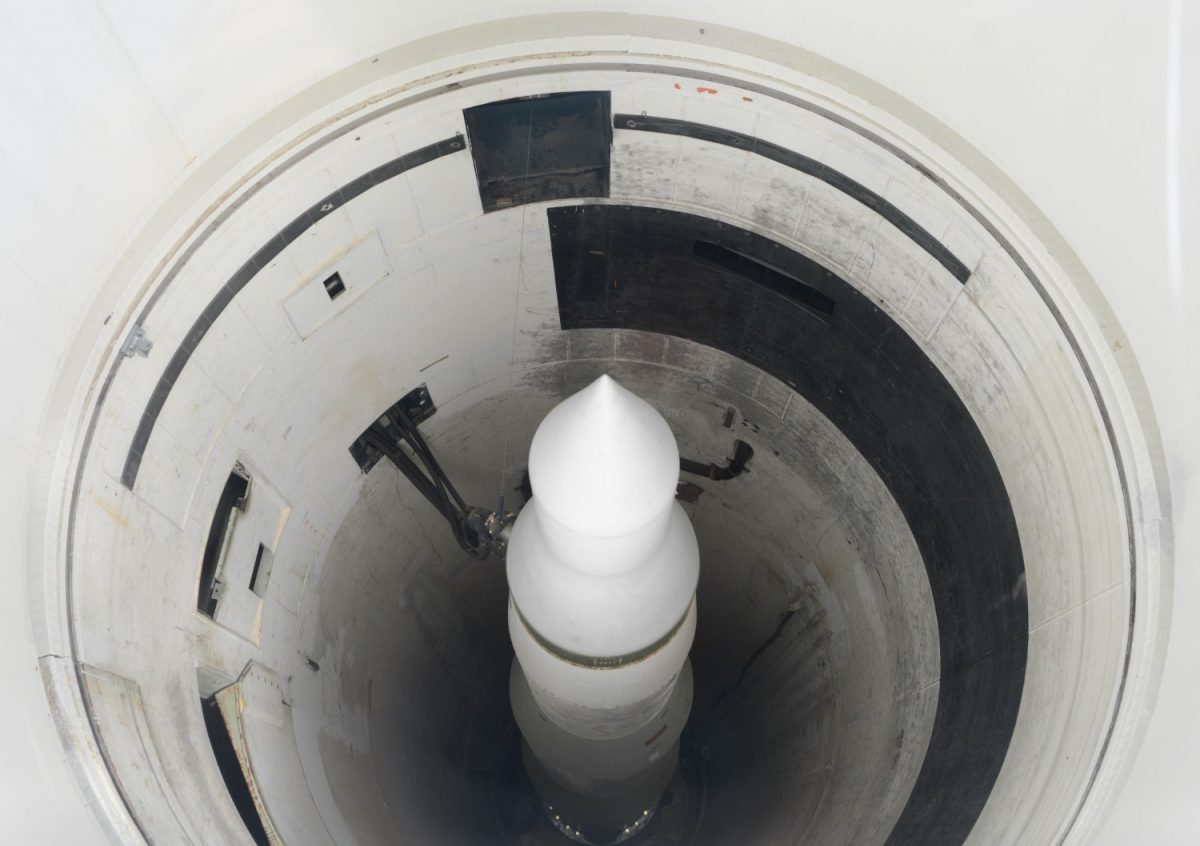HAVE THERE EVER BEEN ACCIDENTS INVOLVING NUCLEAR WEAPONS?
Examples include accidental launch, non-nuclear detonation, and loss of weapons. Thirty two of these incidents have been confirmed by the Department of Defense. Many more are likely unconfirmed; a study in the 1970’s found that a minimum of 1,200 U.S. nuclear weapons were involved in incidents between 1950 and 1968. Many more accidents have occurred in other countries that have nuclear weapons.
WHAT IS A “BROKEN ARROW”?
A “broken arrow” is an accidental event that involves nuclear weapons which doesn’t risk a nuclear conflict between states. In the history of the United States nuclear program, there have been 33 broken arrow incidents officially confirmed by the Pentagon.
Video: A brief, terrifying history of America’s nuclear mishaps
See a list of all known “Broken Arrow” incidents→
WHAT ARE SOME SIGNIFICANT EXAMPLES OF NUCLEAR ACCIDENTS IN THE UNITED STATES?
1961, Goldsboro, North Carolina: Two 4-megaton (400 million pounds of TNT) hydrogen bombs were accidentally dropped over Goldsboro. Of four safety mechanisms in one bomb, three failed to work properly. A single low voltage switch kept the weapon from detonating.
1968, Atlantic Ocean: The U.S.S. Scorpion, a submarine believed to be carrying two nuclear torpedoes, sank in the Atlantic, taking the missiles down with it.
1980, Grand Forks, North Dakota: A B-52 bomber carrying 12 hydrogen bombs and nuclear missiles was engulfed in a jet-fuel fed fire for over three hours, risking exploding the conventional missiles on board the bomber that could have caused a chain reaction detonating the nuclear bombs that were also aboard.
1980, Damascus, Arkansas: A dropped tool pierced the metal casing of a Titan II ICBM, causing a fuel leak and fire. The conventional charge exploded; the nuclear warhead did not.
See a timeline of all declassified nuclear accidents →
WHAT IS HAIR-TRIGGER ALERT?
Read more about taking nuclear missiles off hair-trigger alert →
Nuclear missiles that are kept in a state of readiness that allows them to be launched within minutes after a decision to launch are commonly said to be on “hair-trigger alert.” The military sometimes refers to this status as “high alert,” or “launch-on-warning status.”
The United States and Russia keep their missiles on hair-trigger alert so they can be launched within minutes of a decision to do so, in response to warning of an incoming attack based on data from radars and satellites. Maintaining the option of launching weapons on warning of an attack leads to rushed decision making. It would take a land-based missile about 30 minutes to fly between Russia and the United States; a submarine-based missile could strike in as little as 10 to 15 minutes after launch.
After receiving warning of an attack, political and military leaders would have very little time to assess the credibility of the warning and decide how to respond. This time pressure increases the chance that the U.S. or Russian president would order a launch based on faulty sensor data, a computer glitch, or other erroneous information. Such problems have occurred repeatedly over the past decades and nearly led to a Soviet launch against the United States in 1983. Maintaining the ability to launch within minutes also reduces the barriers to or safeguards against accidental and unauthorized launches – and a missile once launched cannot be recalled.
AREN’T THERE SAFEGUARDS TO PREVENT AGAINST ACCIDENTS?
Years of near misses highlight the problems with US nuclear policy.
Spin the wheel of near misfortune >
Nuclear weapons do have safeguards and redundancies to prevent against accidental nuclear detonation. But, the above accidents illustrate that safeguards can easily fail. As the nuclear arsenal continues to age, it is increasingly likely that existing safeguards will not be sufficient to prevent a detonation. No nuclear weapons, even those with modern safeguards, are immune to accidents. The consequences of a “broken arrow” incident involving a nuclear detonation are enormous. Lives in the immediate area would be lost; fallout could spread across the United States. Each additional nuclear weapon that is maintained increases the risk of an accident.
READ MORE ABOUT NUCLEAR ACCIDENTS:
Broken Arrows: Nuclear Weapons Accidents
Declassified: Nuclear Weapons at Sea
U.S. Nearly Detonated Nuclear Bomb over North Carolina
